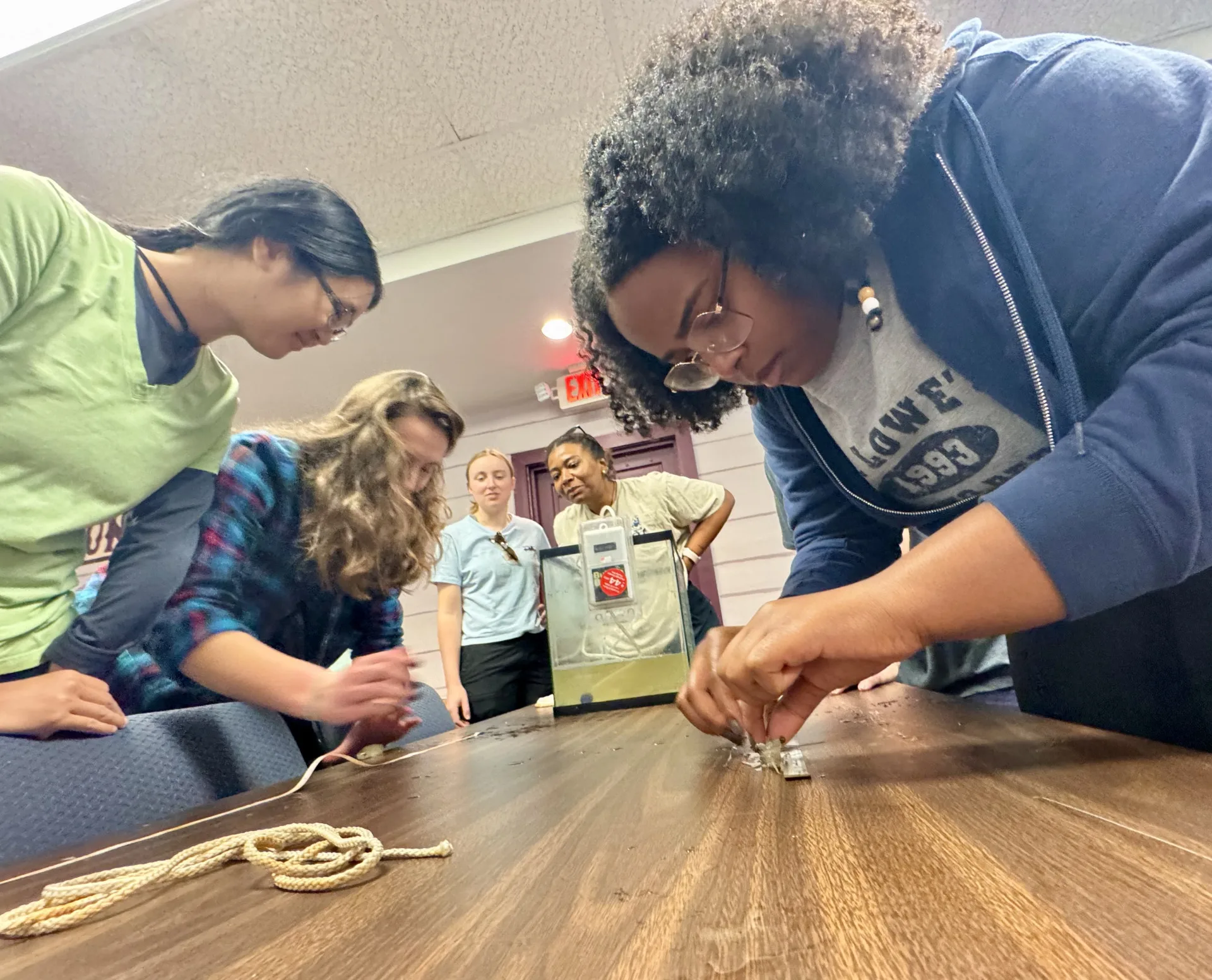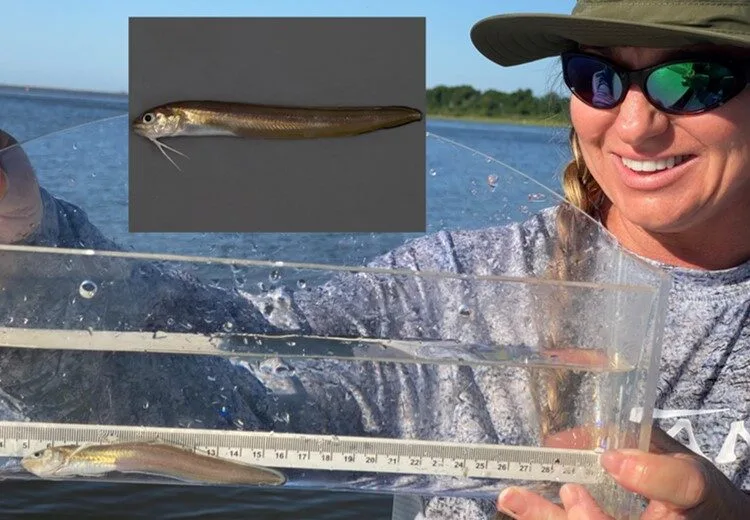Nothing says “welcome to marine science” quite like trying to throw an otter trawl net on dry land without getting tangled in it. That’s exactly how we kicked off our student research training workshop at the Sapelo Island Visitor Center in Darien, bringing together eager students from local universities and colleges for a crash course in estuarine fieldwork. With the What’s My Bait? project materials in hand—species ID guides, trawl diagrams, and our best “you’re-gonna-get-wet” advice—we prepped them for the real deal: collecting data on the water for the Estuarine Fish Monitoring Cooperative (EFMC). Some mastered the net toss quickly, while others briefly resembled human shrimp caught in their own gear. But hey, research is all about trial and error, right?
Once everyone had their feet untangled, it was time for the real test—working in the tight quarters of a skiff. Out on the water, students got their first taste of what it’s like to conduct research in an ever-rocking, ever-splashing, and sometimes crab-infested workspace. They quickly learned that teamwork isn’t just an option when you’re elbow-to-elbow measuring fish or scrambling to keep a clipboard from going overboard-its mandatory! They learned to measure actual bait we bought the night before and then moved on to the task of measuring pinchy and irratated fish quickly and accurately without getting hurt or hurting the fish/crabs. With their freshly learned ID skills, students put the What’s My Bait? resources to the test, calling out species like seasoned marine biologists (or at least very enthusiastic interns).
By the end of the day, they weren’t just students—they were future coastal scientists, ready to take on the world of estuarine research, one trawl at a time. Some signed up for internships, others volunteered to assist with future surveys, but all walked away with a deeper appreciation for the life teeming below the surface. Whether they end up in fisheries management, habitat restoration, or simply with a really cool story about the time they nearly got pinched by a blue crab, we know one thing for sure: the next generation of marine scientists is off to a strong—and slightly soggy—start.



